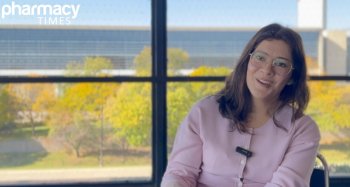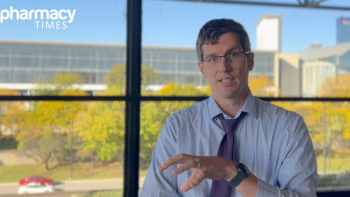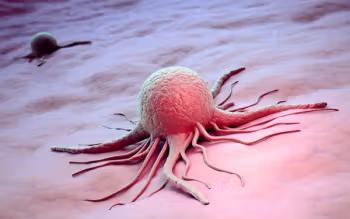
Emergence of PCSK9 Inhibitors
Cheryl Allen, BS Pharm, MBA; Bryan Bray, PharmD, CPP; Jeffrey Dunn, PharmD, MBA; Jennifer Reiter, PharmD, BCPS, BCACP, BCADM; and Peter L. Salgo, MD, share their perspectives on the emergence of PCSK9 inhibitors for treatment of hypercholesterolemia.
Peter L. Salgo, MD: Let’s talk about PCSK9s (proprotein convertase subtilisin/kexin type 9s). What is their mechanism of action? How are they different, for example, than statins?
Jennifer Reiter, PharmD, BCPS, BCACP, BCADM: Statins prevent the production of cholesterol and also upregulate the low-density lipoprotein (LDL) receptors to an extent, but that’s not their main mechanism of action. The PCSK9 inhibitors actually inhibit, simplistically, the degradation of the LDL receptor, so there are more receptors available to clear the LDL from the blood.
Peter L. Salgo, MD: OK, so it’s an entirely different mechanism of action. And as I understood, the statin drugs sort of turn the liver into an LDL vacuum cleaner. There’s a lot of reuptake going on, and that’s not what’s going on with the PCSK9s. We know about the safety and efficacy of the statins. We pretty much established that. These are new drugs, and there are 2 of them out there, right? There is evolocumab and alirocumab. Why don’t we compare the efficacy and the safety of evolocumab, first? How good a drug is it? How safe is it? What does it do to your cholesterol?
Jeffrey Dunn, PharmD, MBA: Well, the studies were based on (and this is key, and this is going to come up when we talk about some other things), is it’s on top of standard of care, which includes a statin. So, that’s the key. They significantly lower LDL, and I think the average, in the 4-year study, was down to like 30 mg/dL or 35mg/dL—so, pretty significant LDL lowering.
Peter L. Salgo, MD: Just stop right there. That number of and by itself should cause all of our viewers to just take a deep breath. We are struggling with statins, often, to get the number down to 110 mg/dL, especially if they’re genetically driven. And you’re talking 30 mg/dL?
Jeffrey Dunn, PharmD, MBA: Yes. But there is a challenge. The statins are great drugs and they’re very cost-effective. And with some of the newer, higher potency statins, you can get a 50%, 60% reduction, but you’ve got to titrate the dose. You’ve got to do other things. That’s also part of the challenge with the statins—we’ve talked about the silent nature of the disease and compliance issues. But part of it is lack of titration. But we’re not maximizing the benefit of the statins.
Peter L. Salgo, MD: Let’s talk about a 50% reduction. If somebody starts with an LDL cholesterol of 220 mg/dL, you’re going to get it down to 110 mg/dL. But 110 mg/dL is not good enough.
Jeffrey Dunn, PharmD, MBA: Right. But it’s different if you’re talking about somebody with an LDL of 90 mg/dL versus an LDL of 190 mg/dL, and what the other risk factors are, and what the other comorbidities are. So, I don’t think you can completely answer it across the board. But, yes, these drugs are extremely efficacious.
Evolocumab, now, has published outcomes data (which we’ll talk about). We’re waiting for the other drug. The question is, is it class effect or not? We’re probably assuming, at this point, it’s class effect. But they have shown a significant reduction in the composite endpoint of reduction of events. Interestingly enough, within that the primary endpoint in that study was myocardial infarction (MI), stroke, cardiovascular-to-death, and rehospitalization due to unstable angina. And that was statistically significant. The other interesting thing, though, was that the secondary endpoint only looked at a subcomponent of that, and looked at each individual driver of the composite and death due to any cause or cardiovascular event that was not statistically significant. So, there is a significant reduction in LDL, there’s a reduction in stroke, and there’s a reduction in MI. All great things. But there is not actually a reduction.
Cheryl Allen, BS Pharm, MBA: But, Jeff, that was over a 2-year time frame, right?
Bryan Bray, PharmD, CPP: Yes, it was 2 years.
Cheryl Allen, BS Pharm, MBA: Forty-seven thousand patients (large study), but only over 2 years.
Peter L. Salgo, MD: Is 2 years powerful enough? Is it long enough?
Bryan Bray, PharmD, CPP: If you look at the absolute risk reduction, it was modest. It was 1.5%. So, if you think about numbers needed to treat, you’re thinking about 67 patients that you have to treat to prevent 1 event. I look at the outcomes, especially cardiovascular outcomes, as being more modest. And then, if you think about the IMPROVE-IT trial, which was also recently done with ezetimibe, in those patients, it’s a little bit different population. Those patients actually had ACS (acute coronary syndrome), but adding ezetimibe to a statin had a somewhat similar absolute risk reduction in cardiovascular disease.
Now we’ve got 2 studies out there that are playing a role in deciding which way to go with drug therapy. And, in the ezetimibe study, you didn’t see the profound LDL reduction that we saw in the other study. But I think, again, it comes back to the point that it was only a 2-year study—it was stopped after 2 years. What would have happened if it went for 5 years? I think that’s more traditional with cardiovascular outcomes.
Jennifer Reiter, PharmD, BCPS, BCACP, BCADM: I like your point on the IMPROVE-IT trial. It was a much longer trial to show that benefit, but the FDA actually rejected their claim to add reduction in cardiovascular outcomes to their labeling with the same modest reduction. But, if we see longer trials on these, like we do on most cardiovascular drugs (5 or more), I do think we’ll see more benefit. We just haven’t seen it yet.
Peter L. Salgo, MD: I remember the original Nissen data, when the statins were coming out. Nissen kept showing there was no floor below which you a) couldn’t lower LDL cholesterol to b) show an improvement in cardiovascular profile. So, if you’re telling me that after 2 years you don’t see risk, where’s the disconnect?
Bryan Bray, PharmD, CPP: Well, I think there’s still a log-linear relationship to lower the LDL. There’s been no J shape curve, or anything like that, that we see in hypertension. So, the lower the LDL, the better. I still think that plays a role. These patients, in these studies, were already very well controlled. Their LDLs, for the most part, were less than 70 mg/dL. They were already on statin therapy, and some people considered the issue about the lipid amount and the atherosclerotic plaques, and so forth, as to whether that could affect the efficacy or not.
Peter L. Salgo, MD: Go ahead.
Jeffrey Dunn, PharmD, MBA: I was going to say that I don’t want to discount. I don’t want to come across as I don’t think these are good drugs. These are really good drugs. To show a reduction in MI and stroke in 2 years, on top of standard of care, and on top of a statin, is fantastic. I mean, that’s comparable to what we saw with NOACs (novel oral anticoagulants) and antiplatelets—significant reductions in events and medical offsets. So, that’s usually important, but when you talk about numbers needed to treat, and evidence-based medicine that gets back to your editorial is at the price of these drugs, does it make sense, now, to have everybody with elevated cholesterol on these drugs? Or, do we follow the guidelines and the study design and try to find those patients who are at risk, or where we have data to say these drugs are going to be effective?
Peter L. Salgo, MD: If we’re all talking about how efficacious these drugs are, and let’s use efficacious in the most unscientific way—that is that they’re going to dump your LDL cholesterol and we’ll wait a few years and see if that’s really clinically significant—now, we have to talk about the risk. What are the clinical pharmacologic risks of these agents? Where do we even start?
Bryan Bray, PharmD, CPP: Well, I think in this study with the LDL being reduced down to 30 mg/dL, there is some concern about neurocognitive effects of that and, at least, in the study that we’ve done here. And there’s an extension of that study going on, now, where they’re actually looking at that a little bit longer—the neurocognitive effects on the LDL being that low. But at least in this 2-year study, there was no effects of it. Also, one of the bigger concerns with statins was, does it cause diabetes? And there were no cases of diabetes found with this, as well. Those are 2 promising things, and I think, maybe, the most common adverse event was injection site reaction. So, it appears as though they’re fairly safe.
Jeffrey Dunn, PharmD, MBA: More tolerability rather than safety. The only other question is, because these are monoclonal antibodies, are we going to have neutralizing antibodies? And what does that mean from immunogenicity. I don’t think that’s a major concern, but it’s another unanswered question.
Peter L. Salgo, MD: I did ask you specifically about evolocumab, but what about alirocumab.
Cheryl Allen, BS Pharm, MBA: Alirocumab. On the label, there’s the lower strength—75 mg. We have seen some criteria that starts the patient, first, at 75 mg subcutaneously every 2 weeks, and then measures control. Then, there’s a dose escalation from there if the patient needs it.
Peter L. Salgo, MD: But that’s all? The side effect profile is the same, as far as you can tell. The efficacy is the same?
Jennifer Reiter, PharmD, BCPS, BCACP, BCADM: Pretty similar.
Bryan Bray, PharmD, CPP: Yes, very similar.
Peter L. Salgo, MD: Really? Okay.
Jennifer Reiter, PharmD, BCPS, BCACP, BCADM: Very well tolerated.
Peter L. Salgo, MD: Then what are the approved indications for these drugs?
Jennifer Reiter, PharmD, BCPS, BCACP, BCADM: I think Jeff addressed it a little bit in that this is, even in the labeling, in addition to maximally tolerated statin therapy for familial hyperlipidemia. Evolocumab also has a homozygous familial hyperlipidemia for its 420-mg monthly dosing. But otherwise, the indication is the same for both of them.
Jeffrey Dunn, PharmD, MBA: Yes, and it’s ACSVD (atherosclerotic cardiovascular disease). It’s not elevated cholesterol.
Peter L. Salgo, MD: Define ACSVD.
Jeffrey Dunn, PharmD, MBA: Atherosclerotic cardiovascular disease.
Peter L. Salgo, MD: This is something else—cardiovascular disease. We’ve got to ask, what do these drugs cost? What are we talking about with spending? You already mentioned that the cost of statins is so low now that you’re not even worried about it.
Jeffrey Dunn, PharmD, MBA: Right. The cost is, on average, anywhere from $1200 to $1500 a month. There are rebates and other things associated with that, but that’s the WAC (wholesale acquisition cost). So, you’re talking $14,000 to $15,000 a year. Relative to a lot of other specialty drugs that we’ve been dealing with over the last 5 years, that’s not a big deal. We have drugs, now, that are $200,000, $300,000. We even have 1 drug, now, that is $800,000 for the first year, that was recently launched. But the issue is the size of the population. Those other drugs are for orphan diseases. If we talk about a third of the population that has elevated cholesterol (whatever the number was that we talked about), you apply, now, $15,000 times that number, and that, now, would be the number 1, by far, budget impact item for any payer.
Peter L. Salgo, MD: Just because all the other drugs out there that we’re comparing this to are really expensive, it doesn’t mean yours is cheap.
Jeffrey Dunn, PharmD, MBA: But here’s the challenge. If you look at data between 2012 and 2018, there’s going to be a doubling in what we are spending on medications. Now, think about that. In 6 years, we’ve now doubled what we’re spending on medication. The average member-per-year is going to be, next near, $1700, $1800 a year. So, there’s a limited amount of dollars. If we go to an employer group (let’s say they’re self-funded and it’s their dollars), and they have 1 hemophilia patient, or they have 20 patients on these drugs, the impact to them is huge.
Peter L. Salgo, MD: Well, of course it’s huge.
Jeffrey Dunn, PharmD, MBA: I don’t think you can compare an oncology drug to this in terms of cost, because those are significantly higher. It’s the prevalence. You have to combine the 2 in understanding the impact to the system.
Cheryl Allen, BS Pharm, MBA: But the prevalence, if we truly look to label to patients who have atherosclerotic cardiovascular disease or familial disease that is uncontrolled by statin therapy, then we’re looking at a million in the US.
Peter L. Salgo, MD: A million times $1400 per month, or whatever.
Jeffrey Dunn, PharmD, MBA: Maybe it’s just payers being unnecessarily worried, but whenever we have a very expensive drug enter a large space, whether it’s asthma or cardiovascular disease, or even hepatitis C, we assume the worst because we have to. That’s our exposure. So, it gets down to denials and other things mentioned earlier. It’s about the appropriate patient. I have no qualms in paying for this drug in the appropriate patient because we will see a benefit. If a patient comes in, if they don’t have ACSVD and they’re not on a statin, we don’t have evidence to say that we’re going to have a non-LDL benefit, and so, where do we go with that?
Newsletter
Stay informed on drug updates, treatment guidelines, and pharmacy practice trends—subscribe to Pharmacy Times for weekly clinical insights.























































































































































































































